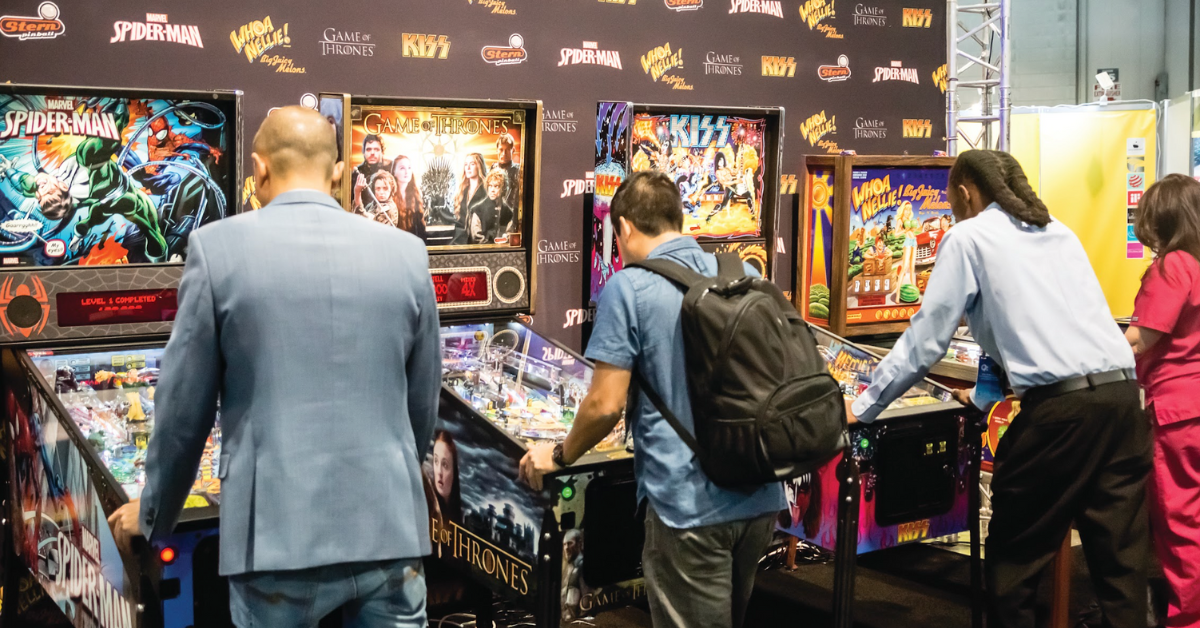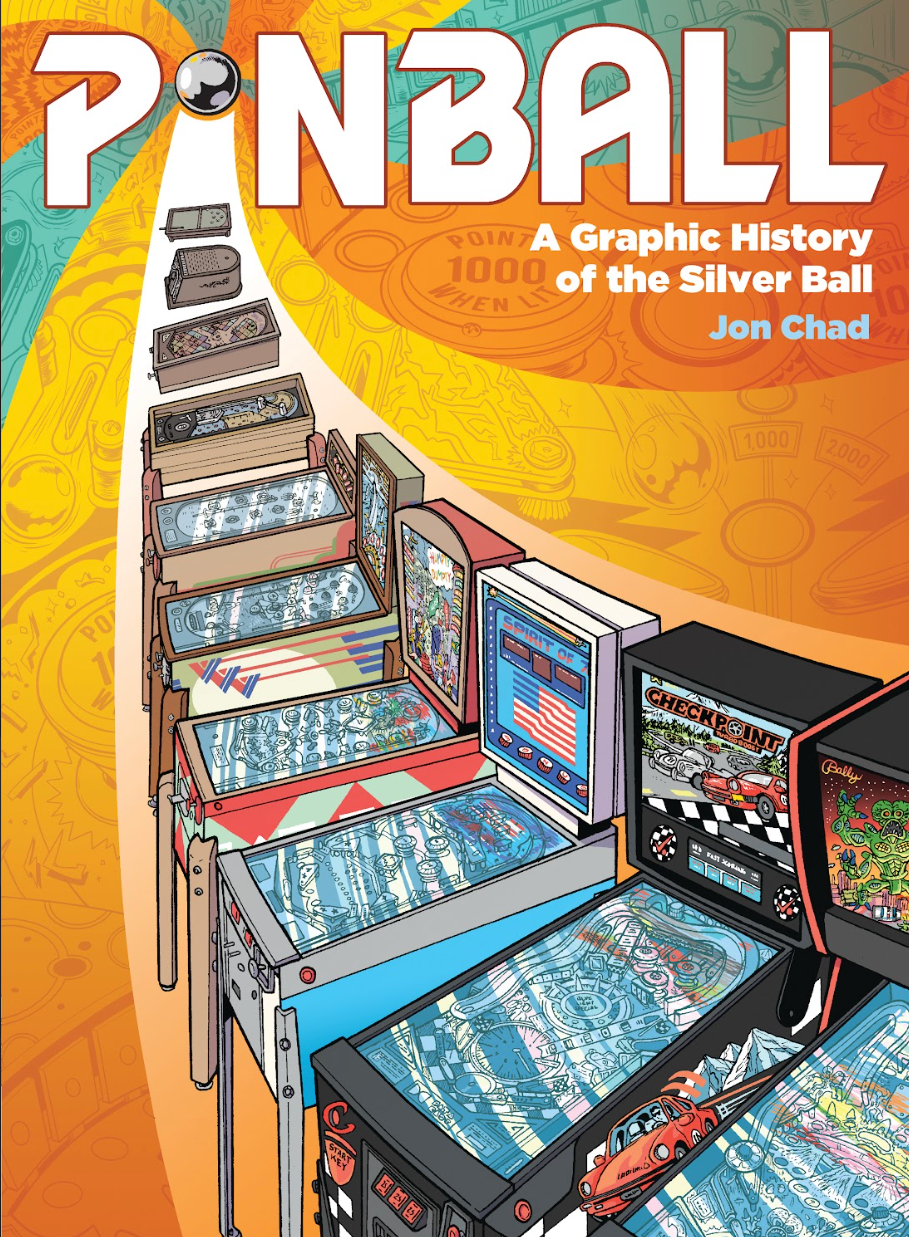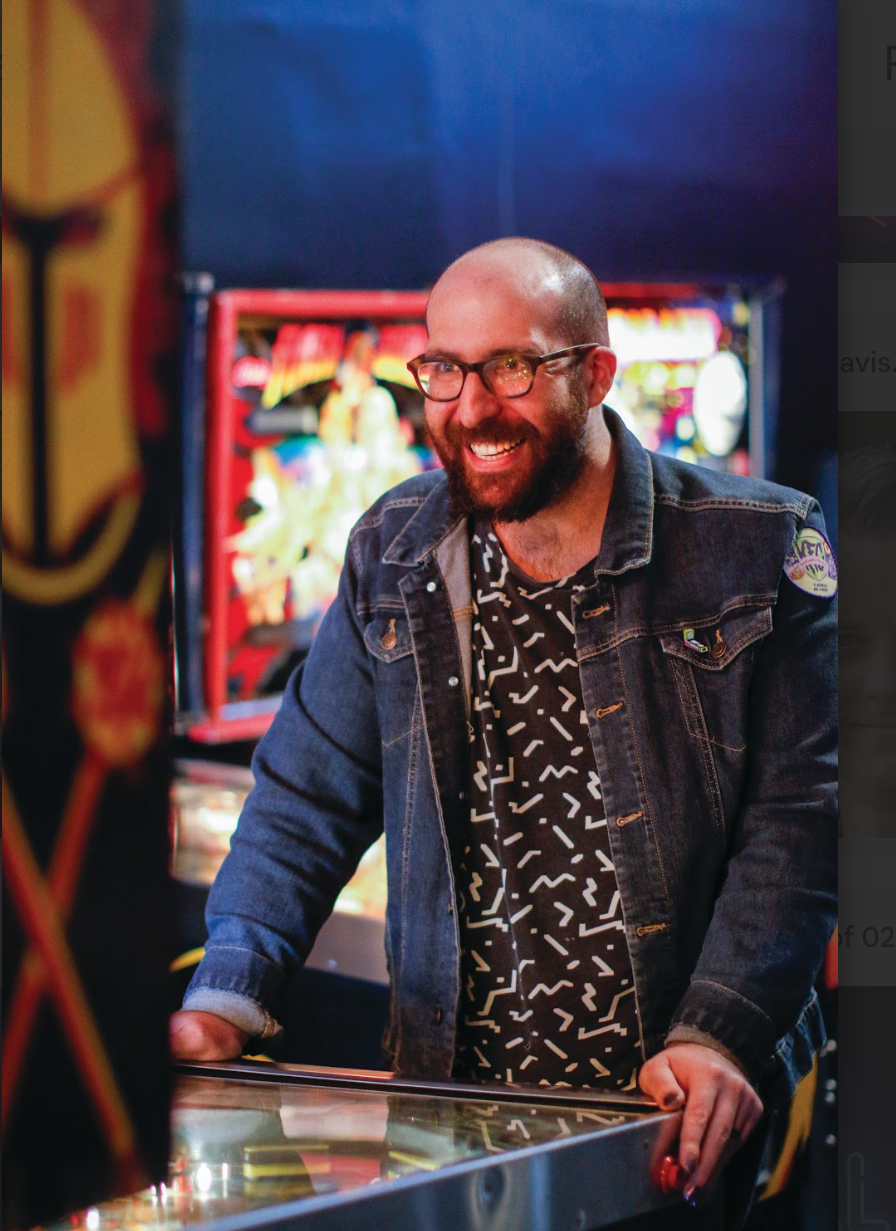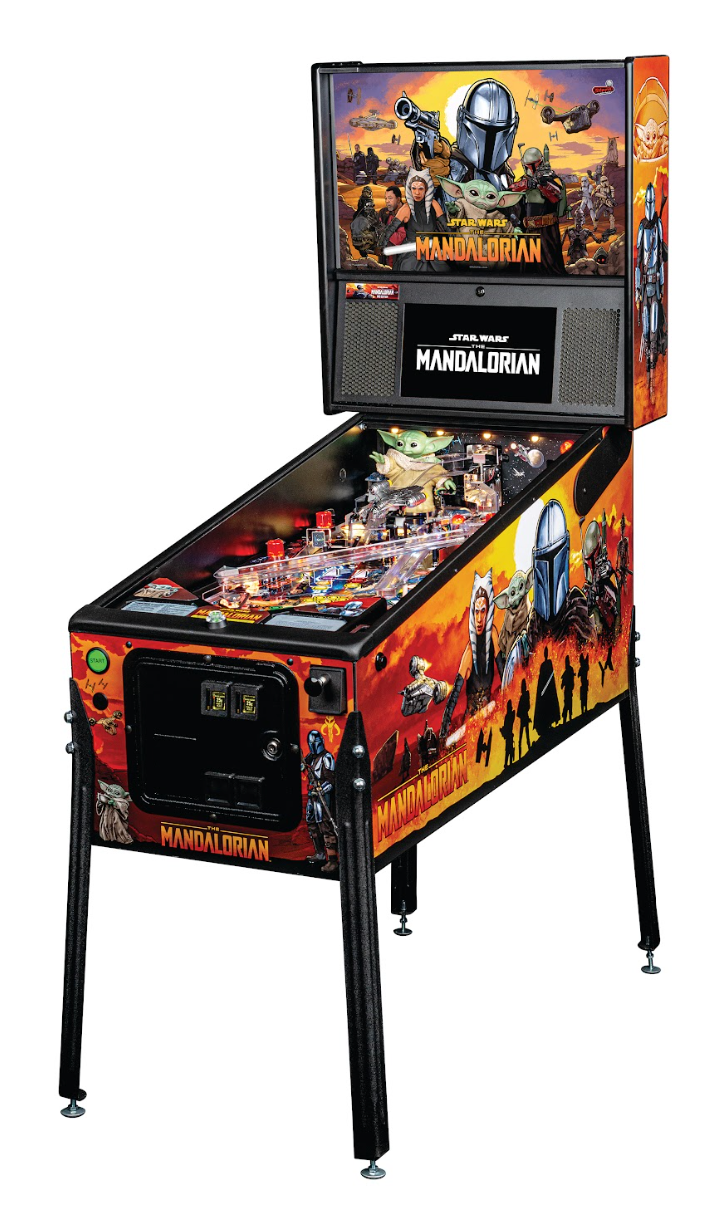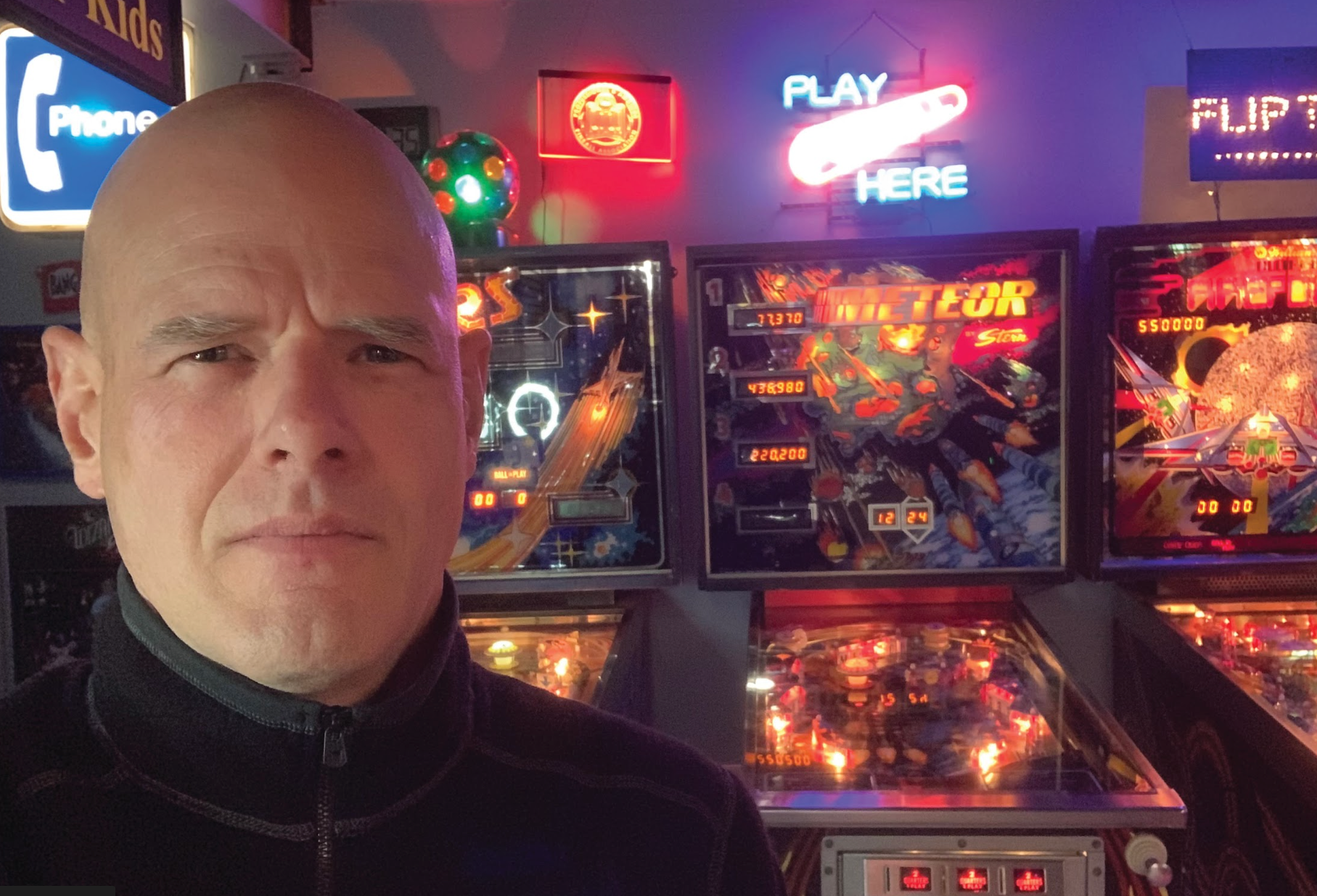In an era of virtual reality and high-tech video games that immerse players into incredibly realistic battlefields or Formula One racetracks, one might think the classic pinball machine is hopelessly antiquated. But with new generations of admirers, the silver ball rolls on while vintage machines are enduringly hot collectibles.
Jon Chad, an illustrator and educator who uses an engaging comic book style to enlighten readers, is author of Pinball: A Graphic History of the Silver Ball, an account of the pinball machine’s unique role in American culture. In his book, Chad describes a 1942 ban on pinball machines in New York City (a prohibition that lasted 30 years), with Mayor Fiorello La Guardia destroying more than 11,000 machines, dumping many into the Hudson River. Despite the largely unfounded hysteria, the author reports, “In the American subconscious, there are still images of gambling and the criminal world associated with pinball.”
The machines that dominated arcades in the 20th century (when not prohibited) were inspired by bagatelle, a modification of billiards that emerged in 18th century France. “Pinball may be derived from bagatelle, but the game we see today is almost entirely a product of American invention and ingenuity,” reports Chad. The coin-operated games that drained the pockets of American youth debuted in the 1930s and their electromechanical (EM) technology — featuring wired switches, relays and lights — presented a dynamic experience accompanied by the game’s quintessential chimes and bells.
The player-controlled flippers that revolutionized pinball were introduced by Gottlieb, a venerable manufacturer, in a 1947 Humpty Dumpty-themed machine. In the 1950s, machines were referred to as “wood rails” because of their distinctive wood side rails, and many presented the eye-popping illustrations of the great pinball artist Roy Parker. The microprocessors of early computers were integrated into “solid- state” pinball machines in the 1970s and more advanced digital technology was introduced in the 1990s. But with competition from portable video game devices like PlayStation, America’s love affair with the addictive pinball machine was severely challenged.
However, pinball machines have experienced another renaissance in the last decade, with machines offering special effects that never could have been imagined in prior eras. Advanced technologies and contemporary themes have attracted a new generation of players accustomed to digital gaming. Meanwhile, the nostalgic value of the garishly appointed machines continues to fuel a massive market for collectors.
What makes pinball machines so beloved by collectors are the colorful pop culture themes that essentially time-stamp them to an era, reinforcing their sentimental value. Machines with art depicting Evel Knievel, the rock band Kiss or Playboy magazine resonate with those who came of age in the 1970s, while the superhero Flash Gordon and horror personality Elvira adorned machines released in the 1980s.
Insisting the game is very much alive, Chad states, “In-person pinball scratches a different itch than video games,” and suggests the quirky variables of brick-and-mortar settings, such as the floor the machine sits on, enhance the experience. “It plays differently every single time, something you can’t get from a video game,” he says. While Chad appreciates the distinctive sounds of the EM era, the author favors the more expressive storytelling that emerged in machines during the 1990s.
Stern Pinball, a business whose lineage dates to the early 1930s, is the world’s largest pinball machine manufacturer, based in the recognized capital of the game, Chicago. Stern’s titles reflect both pop culture icons (e.g., Star Wars, Elvis, James Bond) and contemporary themes (e.g., The Mandalorian, Foo Fighters). “At Stern Pinball, our machines are always evolving and improving, inspiring a lifetime love of games for folks all over the world,” says Seth Davis, the company’s CEO.
While some collectors are enamored with nostalgic machines from the last century, Davis reports, “Without question, this current era of pinball machines is my favorite.” Referencing a new platform that connects the entire universe of Stern Pinball machines, he adds, “What we’ve been able to accomplish with Insider Connected is just the tip of the iceberg, evolving the entire pinball gaming experience for gamers around the world.”
Addressing the challenge of balancing tradition and new technology, Davis states, “Stern Pinball is always working to create a better experience for players, by changing the landscape of the gaming industry while still honoring classic, iconic pinball designs.” Emphasizing the game’s international appeal — Stern Pinball machines are distributed in 50 different countries — Davis adds, “Through technology such as Insider Connected, we’re connecting players globally, which helps the game prosper outside of the U.S.”
Residing outside Richmond, Virginia, Taylor Reese is a respected pinball machine collector, restoration specialist, competitive player, and pinball podcaster. “Some people really love the classic machines, drawn by their nostalgic themes, artwork and layout of the games, but I love the modern machines,” reports Reese. The pinball enthusiast reports that Attack from Mars (released in the 1990s) and Godzilla, a contemporary machine that also happens to be a personal favorite of Davis, are among the most prized machines in his own impressively decorated game room. Suggesting the physicality and unpredictability of pinball has an enduring appeal in the digital age, Reese states, “Every time I step up to play, I have no idea how the game’s going to end.” He adds, “Unlike video games, pinball feels more like an event, and people are looking for ways to socialize after spending so much time staring into screens.”
Roger Grody
A native of Upstate New York but longtime Southern California resident, Roger is an award-winning lifestyle journalist specializing in food/wine, architecture/design and travel. A former city planner, he has a passion for writing about cities and the evolution of neighborhoods, documenting Los Angeles and other California destinations in Fodors, Gayot and DK travel guides. In addition to Unique Homes and its sister publications, Roger’s work has appeared in California Homes, Westways, Sunset, Hemispheres, as well as other lifestyle publications or websites. A resident of Pasadena, California, Roger holds a J.D. degree from Arizona State and M.A. from The University of Chicago.


